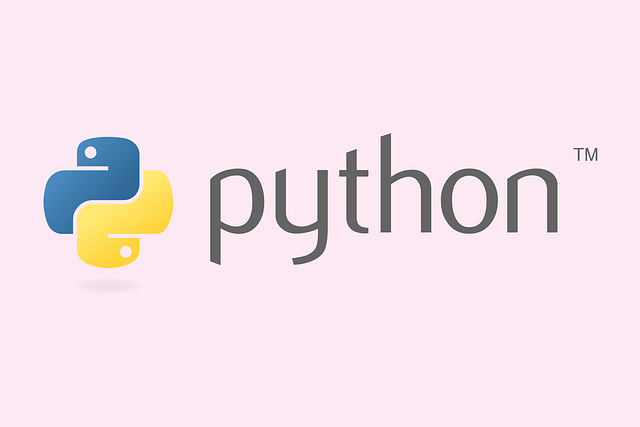Table of Contents
In the ever-evolving landscape of data management, mastering data ingestion strategies has become a cornerstone for businesses aiming to harness the full potential of their data assets. This article delves into the complexities of data ingestion, exploring the tools, technologies, and methodologies that are revolutionizing the way organizations collect, store, and analyze data. From the foundational role of data lakes to the latest in data transformation and integration, we uncover the essential components and strategies that are shaping the future of data engineering.
Key Takeaways
- Data ingestion is a critical first step in the data pipeline, involving the collection and import of data from diverse sources for analysis and processing.
- Data lakes serve as centralized repositories, crucial for housing both structured and unstructured data, enabling scalable storage and analysis.
- Efficient data transformation and integration are key to making data actionable, with middleware playing a significant role in overcoming integration challenges.
- Understanding the comparative advantages of Data Mesh and Data Lake paradigms, as well as their impact on ETL processes and metadata management, is essential for modern data architecture.
- The rise of Hadoop and other open-source solutions has significantly impacted data engineering, offering scalable and flexible environments for building robust data pipelines.
Understanding the Data Ingestion Landscape


The Role of Data Collection in Ingestion
Data ingestion is the critical first step in the data pipeline, where data is collected from a multitude of sources and funneled into a system for further processing and analysis. This process is foundational for organizations to harness the raw materials necessary for extracting valuable insights.
- Data collection involves gathering data from diverse origins such as databases, APIs, streaming platforms, sensors, and social media.
- Data ingestion tools are designed to facilitate the seamless transfer of this data into a centralized repository, often a data lake.
The efficiency of data ingestion directly impacts the ability to process and analyze data effectively. Real-time data ingestion is particularly crucial when dealing with time-sensitive information, ensuring that data is not only collected but also processed and stored promptly.
In the context of data ingestion, it is essential to recognize the interplay between documents and nodes, which represent the structured and unstructured data and the connections between data points, respectively. The goal is to organize the data in a manner that empowers companies to generate insights, visualizations, and other valuable outputs efficiently.
Key Data Ingestion Tools and Technologies
In the realm of data management, the tools and technologies used for data ingestion are critical for ensuring a smooth and efficient flow of information from various sources to a centralized repository. Kafka stands out as a popular choice for handling the initial collection of data, thanks to its ability to process high volumes of data in real-time.
Other key technologies include:
- Hadoop, for its distributed storage and processing capabilities.
- Azure Data Lake and Amazon S3, which provide scalable and secure data lake solutions.
The selection of the right tools and technologies is essential for building a robust data ingestion framework that can accommodate the scale and complexity of modern data ecosystems.
Each tool brings unique strengths to the table, and their integration forms the backbone of an effective data ingestion strategy. It is important to consider factors such as scalability, reliability, and ease of integration when selecting the appropriate technologies for your data pipeline.
Challenges and Solutions in Data Ingestion
Data ingestion is a critical step in the data management process, involving the collection and import of data from diverse sources. The challenge lies in efficiently managing the vast and swiftly generated data as companies strive to capture and process it systematically. Solutions to these challenges often involve a combination of advanced tools and strategic approaches.
One common approach is to employ scalable data ingestion tools like Kafka, which can handle large volumes of data in real-time. Additionally, the use of data lakes, such as Hadoop, Azure Data Lake, and Amazon S3, provides a centralized repository for storing massive amounts of data. These technologies are essential for supporting the subsequent stages of data transformation and integration.
Ensuring data quality and consistency during ingestion is paramount. It requires meticulous planning and the implementation of robust validation mechanisms.
To address the complexities of data ingestion, organizations often adopt a phased approach:
- Phase 1: Collection of data from various sources, including databases, APIs, and streaming platforms.
- Phase 2: Preprocessing and organizing the data, which may involve filtering, validation, and temporary storage.
- Phase 3: Transfer of data to a central repository or data lake for further processing and analysis.
Data Lakes: The Foundation of Data Management


Concept and Importance of Data Lakes
A data lake is a centralized repository designed to store vast amounts of raw data in various formats, from structured to unstructured. This approach to data storage is pivotal for organizations looking to harness the full potential of their data assets. By accommodating diverse data types and sources, data lakes facilitate a more flexible and scalable environment for data analysis and decision-making.
The importance of data lakes lies in their ability to consolidate data into a single location, which can lead to significant cost savings in storage and processing. Organizations can leverage scalable cloud-based solutions to benefit from economies of scale and flexible pricing models. Moreover, data lakes support advanced analytics by providing a rich source of raw data that can be mined for insights.
However, the utility of a data lake is contingent upon robust data governance practices. Ensuring data quality, tracking data lineage, and managing metadata are essential to maintain data consistency, reliability, and compliance. Without these governance measures, the risk of data swamps—repositories of low-quality data—increases, potentially undermining the value of the data lake.
The strategic implementation of data lakes can transform an organization’s data management capabilities, enabling more informed decision-making and fostering innovation.
Integrating Data Lakes with Data Ingestion Processes
Integrating data lakes with data ingestion processes is a pivotal step in ensuring that the vast amounts of data collected are stored efficiently and are ready for analysis. Data lakes serve as a central repository, accommodating both structured and unstructured data, which is essential for organizations that aim to leverage their data for strategic insights.
- Data Collection and Ingestion: This involves the acquisition of data from diverse sources and its subsequent transfer to the data lake.
- Centralized Processing: Once in the data lake, data is subjected to transformation and loading into formats suitable for analysis.
- Tool Integration: Data lakes support integration with tools like Apache Spark and Hadoop, facilitating various data processing and analytics operations.
Ensuring that data ingestion pipelines are well-integrated with data lakes is crucial for maintaining data integrity and preparing the data for complex analytics. This integration is not just about technology, but also about aligning with business intelligence and data strategies to maximize the value of data assets.
Organizations must navigate the complexities of data ingestion and integration with data lakes, considering factors such as data governance, security, and the scalability of data infrastructure. The goal is to create a seamless flow of data from collection to actionable insights.
Security and Governance in Data Lakes
Data lakes serve as centralized repositories for vast amounts of diverse data, including sensitive information. A strong data governance framework is essential to ensure that data security and compliance measures are effectively in place. Simplified governance models, like those in OneLake, centralize data management, allowing for consistent application of policies and access controls across the entire data lake.
Data lakes do not inherently enforce strict governance; they provide a raw storage layer that enables users to define schemas and governance structures during data processing. This flexibility necessitates a proactive approach to data quality and governance, incorporating practices such as data profiling, lineage tracking, and metadata management.
The combined effect of these governance features is a secure and well-managed data environment, where data quality is enhanced, and decision-making is driven by reliable and trustworthy data.
Organizations must navigate the regulatory landscape with diligence, as the trust placed in them by customers, employees, and partners is paramount. Tools like OneLake within Microsoft Fabric offer robust data governance features, ensuring data remains secure and compliant amidst evolving regulations.
Optimizing Data Transformation and Integration


Strategies for Efficient Data Transformation
Efficient data transformation is pivotal for turning raw data into actionable insights. Data transformation tools are essential for cleaning, normalizing, and enriching data, ensuring consistency and accuracy across different datasets and storage systems. By automating these processes, businesses can streamline operations and enhance productivity.
- Identify and implement the right data transformation tools.
- Automate the transformation process where possible.
- Ensure data quality through consistent cleaning and normalization.
- Enrich data to increase its value for analysis and reporting.
Embracing structured data formats is a transformative step that can make data extraction more streamlined and accurate, benefiting businesses across various industries.
The integration of data from disparate sources is another critical aspect. It provides a unified view of the organization’s data assets, which is indispensable for comprehensive analysis and informed decision-making. Middleware solutions can help overcome integration hurdles by acting as a bridge between different systems and formats.
Overcoming Integration Hurdles with Middleware
In the realm of data integration, middleware serves as a critical bridge between disparate systems, ensuring that data flows smoothly from one environment to another. Middleware solutions can significantly reduce the complexity of integrating various applications and data sources, often providing a layer of abstraction that simplifies the process.
When dealing with rapid data volume growth, it’s essential to have a strategy that can scale with your needs. Cloud storage solutions offer a dynamic approach to data storage, adjusting to changing needs without compromising performance. For instance:
- Structured data scaling: Utilize cloud solutions to manage large volumes of structured data.
- Unstructured data integration: Employ middleware that supports diverse data formats.
By leveraging middleware, organizations can focus on value-generating activities rather than getting bogged down by the technical intricacies of data integration.
It’s also worth noting the emergence of AI-powered integration tools, such as those launched by Digibee, which aim to streamline the migration from legacy platforms. These tools are designed to ease the burden of integrating flows from various vendors, promising a more seamless transition to modern integration platforms.
Scalability and Cloud Solutions for Data Integration
In the realm of data integration, scalability and flexibility are paramount. As organizations grapple with the rapid growth of data volumes, cloud-based solutions offer a dynamic approach to scaling infrastructure. These solutions adapt to fluctuating data storage needs, ensuring consistent performance without the constraints of on-premise systems.
- Rapid data volume growth: Cloud storage solutions dynamically adjust to changing data storage needs.
- Decentralization: Data Mesh architectures allow independent scaling of data products by different teams.
- High-performance requirements: Scalable data orchestration solutions are essential for handling large datasets and real-time processing.
Embracing cloud solutions for data integration not only addresses the challenges of scalability but also introduces enhanced flexibility, allowing for a more agile and responsive data management framework.
Navigating the Data Mesh and Data Lake Paradigms


Comparative Analysis of Data Mesh and Data Lake
When considering Data Mesh vs Data Lake, it’s essential to understand their distinct approaches to managing and processing data. Data Mesh embraces scalability by decentralizing data ownership and infrastructure, promoting domain-specific data processing frameworks. This approach allows teams to select the best tools for their needs, fostering tailored analytics and processing capabilities for specific domains.
On the other hand, Data Lakes offer scalability by leveraging distributed storage and parallel processing technologies. They act as a single source of truth and support a wide range of data processing and analytics capabilities. However, changes to the data structure or schema in a Data Lake may necessitate meticulous planning and migration strategies.
One significant difference between the two paradigms is their approach to data structure and governance. Data Lakes centralize processes and pipelines, transforming and loading data into formats usable across various teams. In contrast, Data Mesh promotes decentralized ownership and domain-oriented collaboration, enhancing flexibility and agility.
In conclusion, both Data Mesh and Data Lake represent two distinct but complementary approaches to data management. Each has its strengths and is best suited to different organizational needs and strategies.
ETL Processes in Data Integration
ETL, an acronym for Extract, Transform, and Load, is the backbone of data integration in modern enterprises. It is a data integration process that moves data from one or more sources to a data warehouse. The ETL pipeline is meticulously designed to extract data from various production systems, transform it into a standardized format suitable for analysis, and then load it into a Data Warehouse or Data Lake for organizational use.
The efficiency of ETL processes is critical for ensuring that data is not only accurate and consistent but also readily accessible for analysis and decision-making.
Building robust ETL pipelines requires a deep understanding of both the data sources and the target storage systems. Data engineers must create analysis tools to monitor the health of these pipelines, alerting them to any issues and maintaining the integrity of the data flow. The transformation stage is particularly crucial, as it involves cleaning, normalizing, and enriching data to ensure consistency across different datasets.
In the context of Data Mesh and Data Lake architectures, the approach to ETL can differ significantly. Data Mesh promotes domain-specific autonomy in ETL processes, while Data Lakes typically centralize these operations. Regardless of the architecture, the goal remains the same: to provide a unified and reliable view of the organization’s data assets.
Metadata Management and Data Discoverability
In the realm of data management, metadata is the compass that guides users to the right information. It serves as a critical component for ensuring that data is not only stored but also easily retrievable and understandable. Metadata management involves the creation, storage, and control of metadata, which in turn enhances data discoverability.
Effective metadata management enables organizations to categorize and tag their data assets, making it simpler for users to search and locate the data they need. This process is often automated through tools that extract metadata and use it to index data repositories. Below is a list of key benefits that metadata management brings to data discoverability:
- Improved searchability and filtering of data
- Enhanced data context and understanding
- Streamlined data governance and compliance
- Facilitation of data lineage and tracking
Embracing robust metadata management practices is essential for organizations to unlock the full potential of their data assets. It not only empowers users with the ability to find and interpret data quickly but also supports compliance with data regulations and standards.
The Evolution of Data Engineering with Hadoop


The Impact of Hadoop on Data Management
Apache Hadoop has been a game-changer in the field of data management, particularly in how organizations handle large volumes of data. The advent of Hadoop has democratized data analytics, allowing companies of all sizes to leverage big data insights that were once the exclusive domain of large enterprises with significant resources.
The core components of Hadoop, such as the Hadoop Distributed File System (HDFS) and MapReduce, have provided a robust foundation for scalable data storage and processing. HDFS enables the storage of data across a network of computers, ensuring that storage capacity can expand as needed. MapReduce complements this by facilitating efficient batch processing across distributed datasets.
Hadoop’s ecosystem also includes tools like Hive, which allow for SQL-like querying of data stored in HDFS. This has bridged the gap between traditional relational databases and the big data environment, making it easier for data engineers to work with large datasets.
The impact of Hadoop extends beyond just storage and processing. It has also influenced the development of other big data technologies and comparisons, such as Hadoop vs. MongoDB, and Bigtable vs. BigQuery. These comparisons highlight the diverse approaches to managing big data and the importance of choosing the right tool for the right job.
Open-Source Solutions and Their Role in Data Engineering
In the dynamic field of data engineering, open-source solutions are the backbone of managing and processing large datasets. These tools are essential for the creation and management of systems that handle the influx of big data, ensuring scalability and robust analytics capabilities.
Open-source technologies like Hadoop have revolutionized the way data is stored and processed. Alongside Hadoop, tools such as Apache Spark and Apache Flink have emerged as powerful platforms for real-time data processing and analytics. These technologies enable data engineers to build scalable data pipelines that can handle the complexities of big data.
The adoption of open-source solutions in data engineering has democratized access to powerful data processing capabilities, allowing organizations of all sizes to leverage big data insights.
The integration of open-source tools into data engineering workflows has also led to the development of comprehensive data observability platforms, such as the one recently made available by Acceldata. This move towards open-source iterations of data platforms is indicative of a broader trend towards cost-effective and accessible data solutions.
Building Scalable Data Pipelines with Hadoop
The creation of scalable data pipelines is a cornerstone in the field of data engineering, particularly when dealing with big data. Hadoop, with its distributed storage and processing capabilities, has become an essential tool for this purpose. The Hadoop ecosystem, including technologies like Spark and Hive, enables the efficient handling of massive datasets.
- Hadoop Distributed File System (HDFS) provides the foundation for storing large volumes of data.
- Spark offers fast processing and can perform complex ETL operations on data stored in HDFS.
- Hive allows for SQL-like querying, making big data more accessible to analysts.
The synergy between these technologies ensures that data pipelines are not only scalable but also optimized for performance. Batch processing, a common use case in Hadoop, allows for the accumulation and processing of data in large batches, ideal for in-depth analysis and reporting.
The table below outlines the roles of key technologies in a Hadoop-based data pipeline:
| Technology | Role in Data Pipeline |
|---|---|
| HDFS | Data Storage |
| Spark | Data Processing |
| Hive | Data Querying |
Conclusion
In the ever-evolving landscape of data management, mastering data ingestion strategies is not just beneficial—it’s imperative. From the initial collection of diverse data forms to the sophisticated integration and transformation processes, the journey of data from source to insight is complex and critical. Tools like Kafka, Hadoop, and cloud-based data lakes have emerged as linchpins in the architecture of modern data pipelines, enabling organizations to harness the power of their data. As we’ve explored, the success of data ingestion hinges on understanding the nuances of data lakes, data meshes, and the technologies that facilitate seamless data flow. By prioritizing efficient data ingestion and embracing the right tools and methodologies, businesses can unlock the full potential of their data, driving innovation and maintaining a competitive edge in a data-driven world.
Frequently Asked Questions
What is data ingestion and why is it important?
Data ingestion is the process of obtaining and importing data from various sources into a system for analysis and processing. It’s crucial as it gathers the raw materials needed for deeper analysis, serving as the first step in the data pipeline.
How does a data lake enhance data management?
A data lake is a centralized repository that stores structured and unstructured data at scale. It supports data ingestion, storage, and analytics, allowing for the pooling of data from different sources and facilitating easier access and analysis.
What are the challenges of data ingestion?
Challenges in data ingestion include handling diverse data formats, ensuring data quality and consistency, scaling with data volume growth, and integrating data from disparate sources efficiently.
How do data lakes integrate with data ingestion processes?
Data lakes receive ingested data, where centralized processes and pipelines transform and load the data into usable formats for analysis, aiding various teams in consumption and decision-making.
What role does Hadoop play in data engineering?
Hadoop is an open-source framework that enables storage and processing of large datasets in a distributed computing environment. It plays a key role in building scalable data lakes and pipelines, managing vast amounts of data efficiently.
How do data mesh and data lake paradigms differ in data management?
Data mesh focuses on a decentralized approach to data management, emphasizing domain-oriented ownership and a self-serve data infrastructure. In contrast, data lakes centralize data storage and processing, typically with a more monolithic infrastructure.





